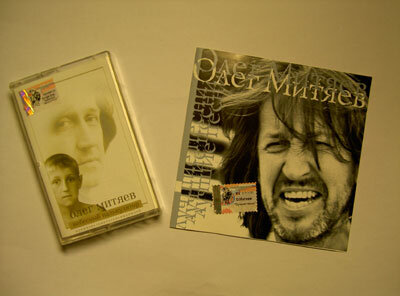André Kuipers' diary - Part 12: Winter survival training and measuring blood pressure
26 February - 3 March On Friday, I set off into the woods with an instructor for a winter survival exercise. If we have the misfortune to land our Soyuz capsule in some barren winter landscape where the rescue team cannot get to us quickly, we will need to be able to build a shelter and make a fire to survive for a few days.
We were only allowed to use things that are available in the Soyuz capsule. We built a hut and a wigwam using tree trunks, pine branches and the parachutes from the capsule, then added some insulation aluminium-coated space blankets. As we built our tents and made a fire, I felt rather like a Boy Scout! Emergency rations are always carried on board the Soyuz, so we made our lunch from these. Snow, heated in a tin cup, provided us with water for our tea.
In the past, crews really have sometimes landed in inaccessible places. Since a year ago there is also a GPS system and satellite telephones on board, but you never know what might happen. In the event of an emergency landing, you could come down anywhere between 51.6° North and 51.6° South, possibly in some inaccessible mountain range. It took all day just to run through the procedures. We could not devote more than one full day to it; furthermore, the doctors did not want to risk me getting frostbite so close to the mission. They are watching my health ever more closely now.

Concert
I used my time at the weekend to put in some extra training with my chief instructor from our ESA section, and on Sunday I accompanied Slava, the ESA driver, to a concert by the Russian troubadour, Oleg Mitjajev. I had once heard Slava playing this music in the car, and I quite enjoyed it. Later, I bought some recordings for myself. When I heard that Mitjajev was to perform in the Kremlin concert hall, I invited Slava to go to the concert.
It was delightful to listen to. The performance was also packed with jokes and anecdotes, but I could not follow these very well. Humour is not just a matter of language; you also need a good knowledge of Russia's politics and history to understand it. I can well believe that it was funny, as Slava frequently laughed out loud.

Blood pressure
I had to be up early the next morning. At seven in the morning, I had to kit myself out in all kinds of equipment for the CIRCA experiment. Actually, it consists of three experiments in one. Readings are taken on the ground before and after the flight to provide comparative data for the readings taken during the flight. This is known as 'baseline data collection'. So on Monday and Wednesday, throughout the day and the night, I wore a band around my arm and blood pressure monitors on my fingers.
Every 15 minutes during the day and every half hour throughout the night, the cuff on my arm is briefly inflated to measure my blood pressure. The little cuffs on my fingers measure continuously. During the day, measurements are taken under a variety of circumstances. For example, I had to perform stress tests such as doing arithmetical calculations, or simply relax, or concentrate on my breathing while standing or lying down. It is not much fun, especially at night. It feels as if someone is gripping your arm every half hour. Exactly the same will happen when I am in space; I hope that it will not disturb my sleep too much.

Laser measurement
Last week, together with my Commander, Padalka, I also trained to use the laser rangefinder. Imagine: we are in the Soyuz, approaching the Space Station, when the radar fails; I would then have to float up to the habitation section and measure the distance to the Station with a special laser. On the ground, I sit in one simulator while Gennadi sits in another. We have radio contact. Of course, by using two reference points you can also measure your speed. Based on the data that I give him, the Commander can use the engines to govern the speed and dock safely.
If the laser malfunctions as well, I can perform the same measurements using markings in the sights, but that is much less accurate. It would not be the first time that Padalka has had to dock manually. He has already done so with the Mir space station. I feel much safer, knowing that I will be flying with such an experienced cosmonaut. The laser rangefinder and manual re-entry exercises are both great fun, but we hope that they will not be needed.

Seeds
"Seeds in Space" is a very important experiment during the flight. I received my first instructions about it this week. In the experiment, I will grow salad cress in space while children in the Netherlands grow it on Earth. The experiment consists of two boxes, one of which is kept in the light and the other in the dark. These contain rucola, or salad cress, seeds. We will all give them water at the same time, during video link-ups with the Space Station.
A few days later, the children and I will compare results. The differences between the seedlings in space and those on Earth should show the effects of gravity and light on their growth. This week, I sought out the best place in the Space Station to hang up the little rack containing the experiment. I will start this experiment on the fourth day of my mission.




